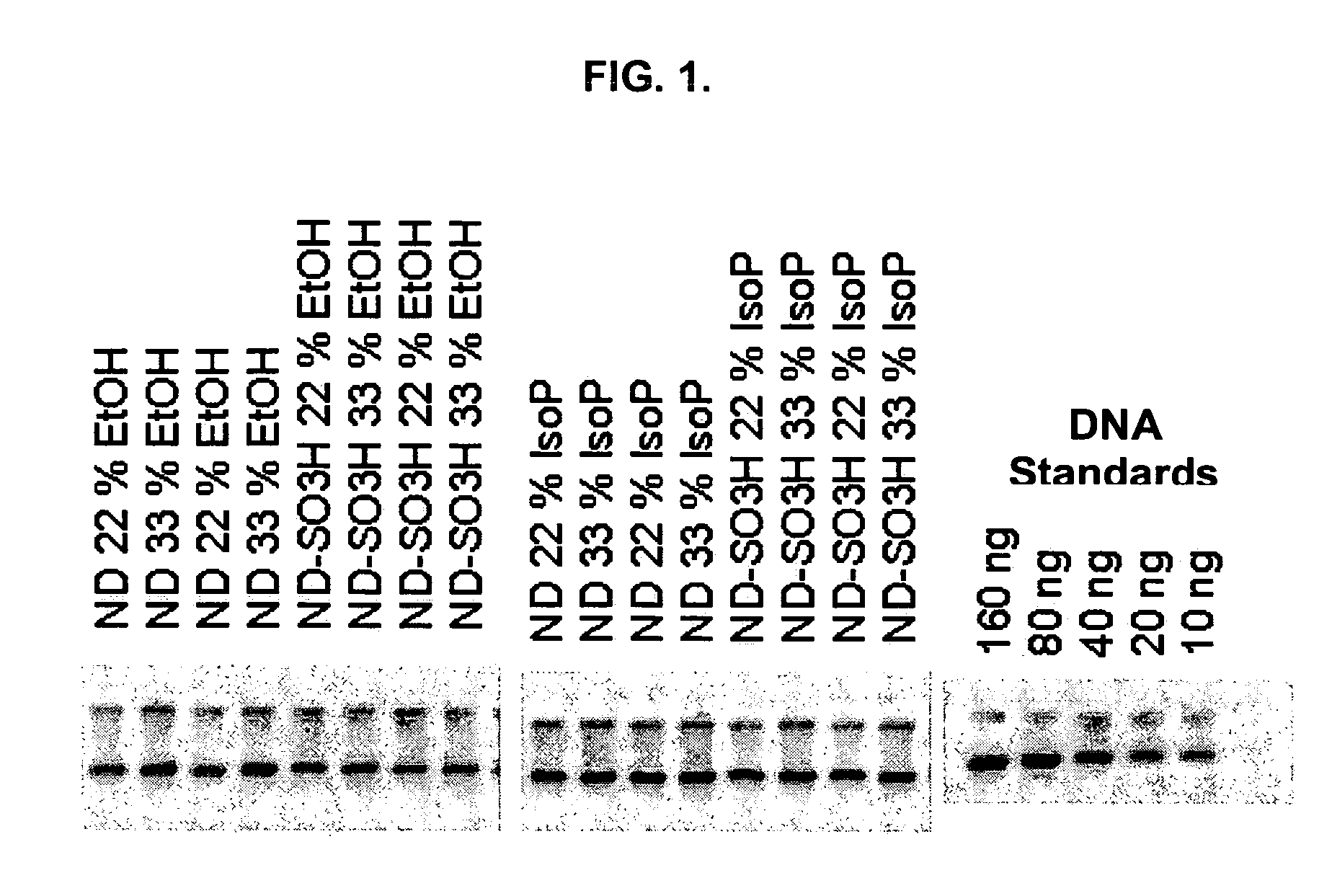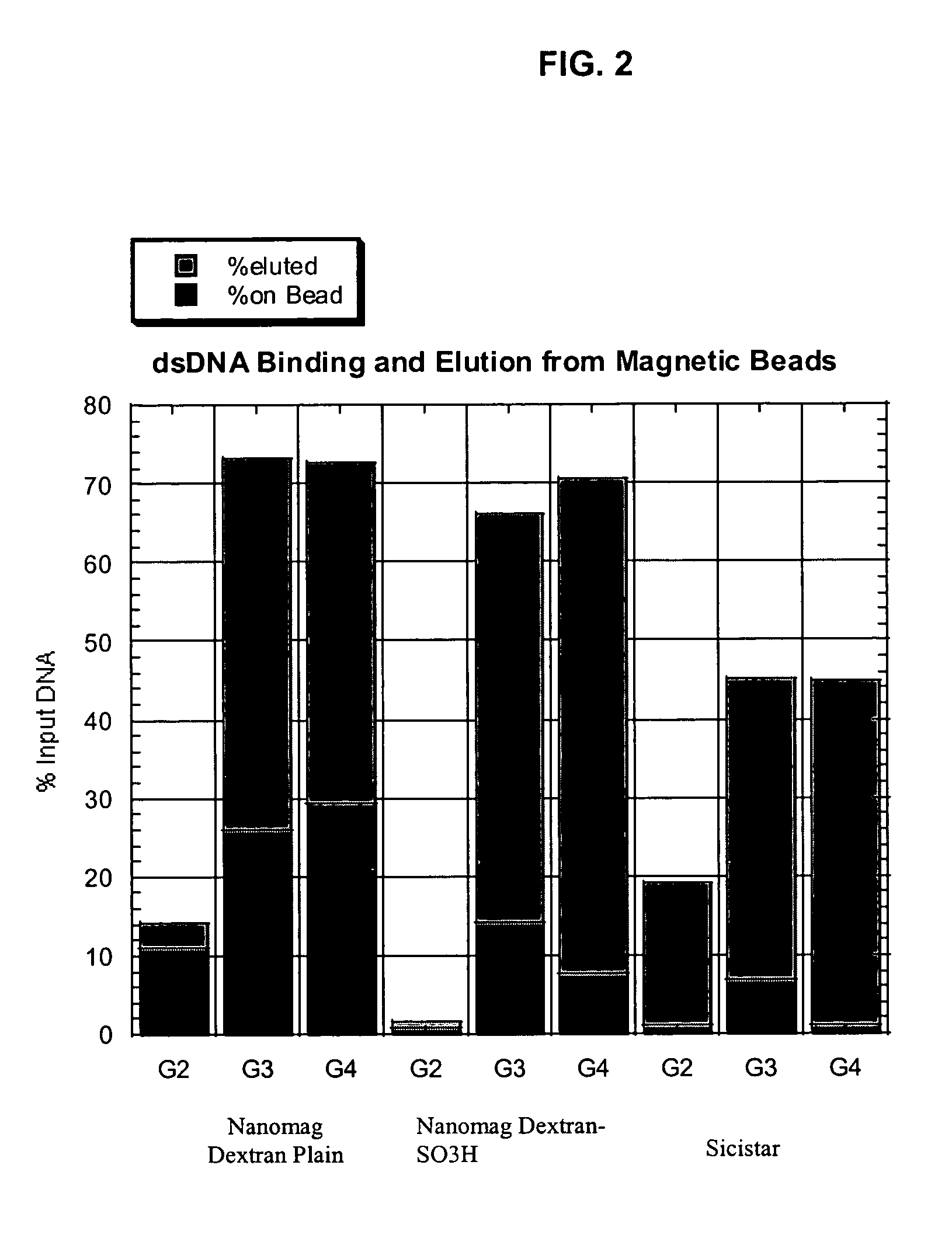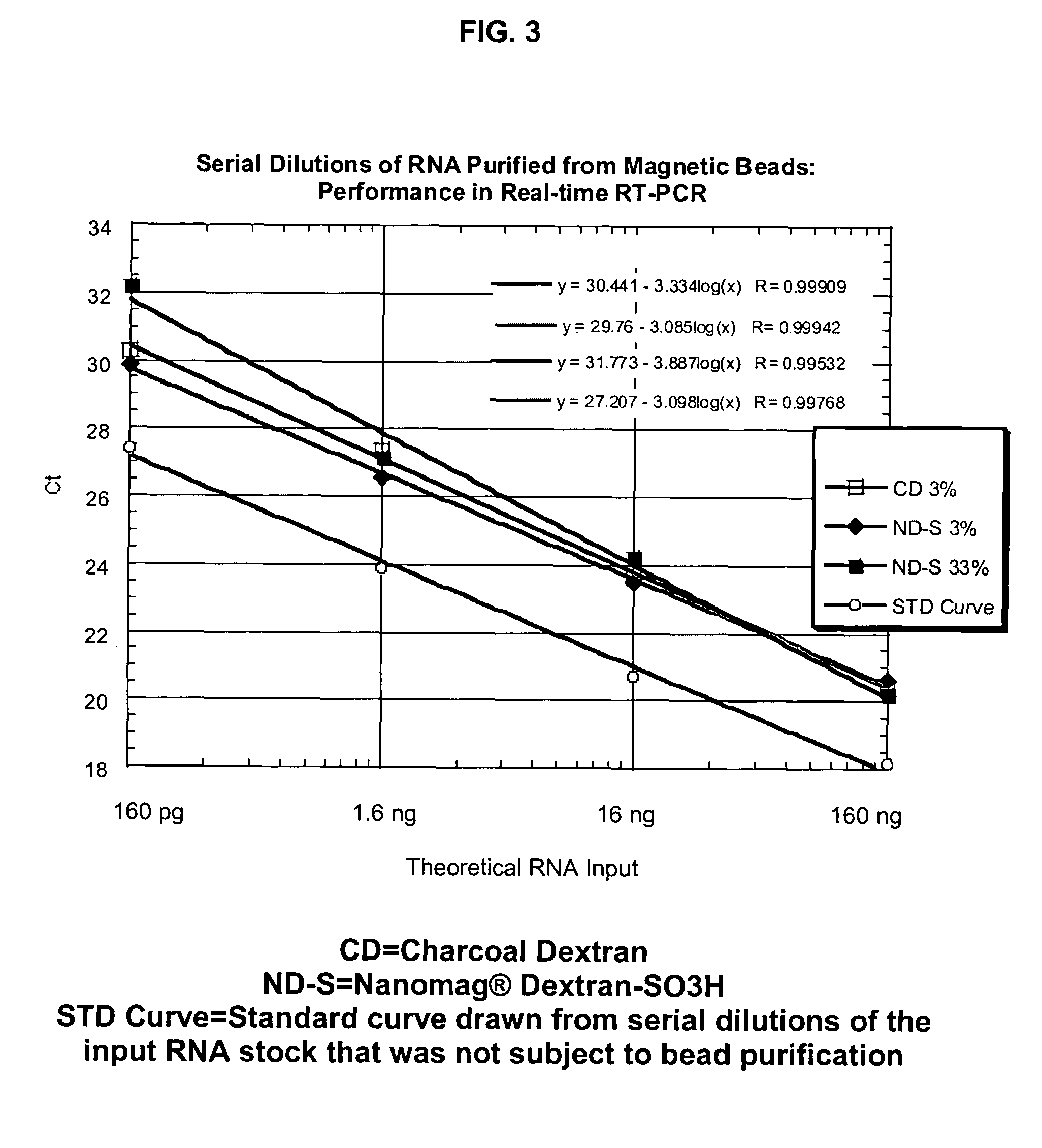Modified surfaces as solid supports for nucleic acid purification
a technology of nucleic acid and surface, which is applied in the field of nucleic acid purification, can solve the problems of complex extraction of polynucleotides sufficiently free of contaminants for molecular biological applications, limited utility of silica magnetic particles in some samples, and inability to efficiently isolate rna from certain biosamples, etc., and achieves low cost and high purity. , the effect of reducing the number of rna and reducing the number o
- Summary
- Abstract
- Description
- Claims
- Application Information
AI Technical Summary
Benefits of technology
Problems solved by technology
Method used
Image
Examples
example 1
The Yield and Intactness of RNA Purified from Dilute Solution using Dextran Magnetic Beads
[0107]In a study demonstrating the ability of the Dextran particles to bind and elute RNA, a total of 10 μg of RNA (rat kidney total RNA, Ambion) was added to 250 μg of the magnetic beads in a well of a 96-well plate containing 50 μl of a 0.5× guanidinium isothiocyanate (GITC) lysis solution (Ambion) and 50 μl of 100% ethanol (thus, 50% ethanol final concentration). The solution was incubated at room temperature (23° C.) for 2-3 min, and then the binding buffer was removed after the particles were drawn to the side by contact of the plate with a conventional magnet (Magnetic Stand-96, Ambion). The bound RNA was eluted directly in 25 μl of RNase-free water (Ambion). The RNA yield was quantified by absorbance, using a NanoDrop spectrophotometer. The intactness of the RNA was assessed using the 2100 BioAnalyzer (Agilent) analysis software after separation on an RNA Labchip. The input RNA had a 28S...
example 2
RNA Binding Capacity of the Dextran Magnetic Beads
[0109]To demonstrate that Dextran particles could bind a large fraction of their mass in RNA, a binding capacity measurement was performed. First, 40 μl of 1% Nanomag Dextran or 100 μl of 2.5% Nanomag Dextran-SO3H beads were pre-washed 3 times in 1 ml of water or 0.5× GITC lysis buffer (Ambion). After the last wash, beads were resuspended in either wash of 0.5× GITC lysis buffer (Ambion) such that the final concentration of beads was 1%. Next, the 5 μl of the 1% bead slurry (50 μg) was added to a 100 μl solution containing 0.5× GITC lysis buffer (Ambion), 50% ethanol, and 10 μg of RNA (rat kidney total RNA, Ambion). Samples were incubated at room temperature for 2-3 min, and the magnetic particles pelleted with a conventional magnet (Magnetic Stand-96, Ambion). The residual binding buffer was then carefully removed by suction with a small aperture pipet tip. The RNA was eluted in 50 μl of RNase-free water (Ambion). As shown in Table ...
example 3
Purification of Genomic DNA using Dextran Particles
[0111]DNA, as well as RNA, can be purified using Dextran particles such as the ones described here. To evaluate the binding and elution of double-stranded DNA (dsDNA), the following study was performed. A total of 5 μl of 1% ND or ND-SO3H beads were combined with 100 μl of GITC lysis solution (Ambion), 100 μl of 66% or 100% Ethanol or Isopropanol, and 500 ng of lambda genomic DNA. After binding the DNA to the beads, the magnetic particles were separated with a conventional magnet (Magnetic Stand-96, Ambion) and the supernatant removed. The bead pellets were then washed twice with 200 μl of a solution containing 80% ethanol, 100 mM NaCl, 4.5 mM EDTA, and 10 mM Tris (pH 7.5). The dsDNA was eluted in 8 μl of 10 mM Tris (pH 8.0), 1 mM EDTA that was pre-heated to 70° C. and separated on a 1% agarose gel. The DNA was visualized by staining with PicoGreen (Molecular Probes), and fluorescence intensities measured after scanning with a STORM...
PUM
| Property | Measurement | Unit |
|---|---|---|
| size | aaaaa | aaaaa |
| diameter | aaaaa | aaaaa |
| size | aaaaa | aaaaa |
Abstract
Description
Claims
Application Information
 Login to View More
Login to View More - R&D
- Intellectual Property
- Life Sciences
- Materials
- Tech Scout
- Unparalleled Data Quality
- Higher Quality Content
- 60% Fewer Hallucinations
Browse by: Latest US Patents, China's latest patents, Technical Efficacy Thesaurus, Application Domain, Technology Topic, Popular Technical Reports.
© 2025 PatSnap. All rights reserved.Legal|Privacy policy|Modern Slavery Act Transparency Statement|Sitemap|About US| Contact US: help@patsnap.com



